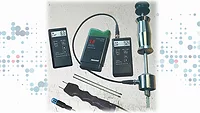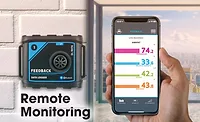Moisture Meters: A Critical Tool in Water Damage Restoration
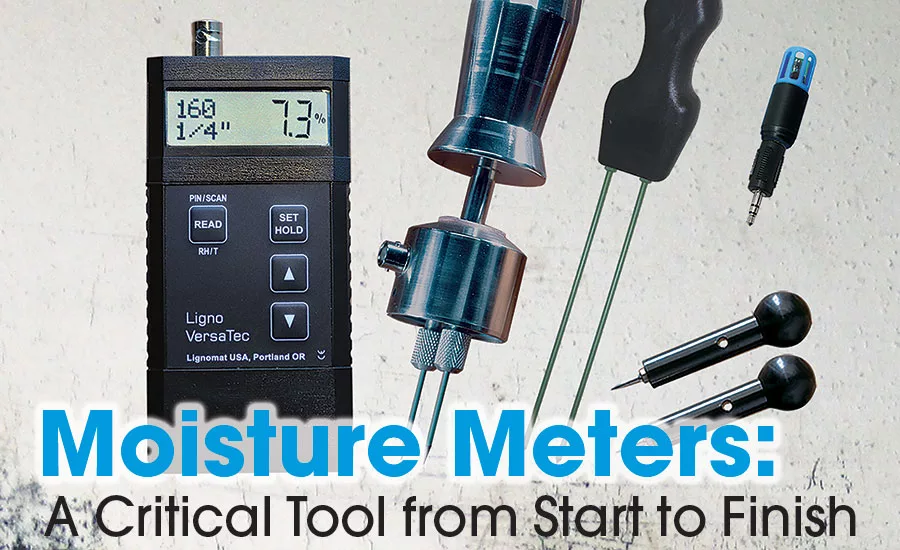
This is an example of a pin and pinless meter and a thermo-hygrometer all in one. The selection of electrodes allow to choose the right mode and the right accessories for the job on hand. Photos courtesy of Lignomat
Why do we need moisture meters in water damage repair at every step of every job? The answer is quite simple: moisture meters are used for moisture control to avoid mold build-up and to check moisture in floors, cabinets and other furnishings to avoid cracking, checking and warping.
As we all know, mold presents a serious health hazard. In addition, mold destroys building materials by extracting carbon-containing substances and using them as food. All organic matter can serve as a food source for mold: wood, wood-based products, plastics made from petroleum products, and building materials such as concrete and drywall. Mold grows on wet surfaces, in high relative humidity at moderate temperatures and gets its nourishment from the material on which it grows.
In reality, to avoid mold, we can only control the wetness of the materials and the high humidity in the air. We will always make buildings out of concrete or wood and use other carbon-containing materials. And we will always live in comfortable, moderate temperatures. The only variables in the mold equation we can control are moisture and humidity. We usually do that by keeping buildings dry.
However, when disaster strikes, a pipe breaks, a roof leaks, or floods occur, we need to act swiftly and remove the excess water before mold builds up. Therefore, every responsible water damage repair company needs moisture meters and thermo-hygrometers to determine the extent of water damage, and later to check the drying progress, then last to confirm all excess water has been removed.

A technician uses a pinless meter to assess how much of the walls need to be removed. Photos courtesy of Lignomat
Determining Depth of Water Infiltration
Here, the challenge is to find the moisture from the surface to the depth of absorption. Pin and pinless meters are helpful. Both meters have advantages and disadvantages, and it is not always an easy or clear choice. It is important to use a reliable meter because you do not want to replace materials unnecessarily, you want to replace only the damaged materials with a high moisture content.
Pinless meters function mainly as capacitance meters. They have a measuring plate on the back, which emits and picks up low-powered electromagnetic signals. The readings generated by the meter are an average of the entire measuring field between surface and maximum depth of penetration. Pinless meters are used in the restoration industry to differentiate between areas of high and low moisture. The meter is moved across the area and the user looks for changes in the moisture value. Moisture problems up to 0.75 inches deep can be detected easily and quickly.
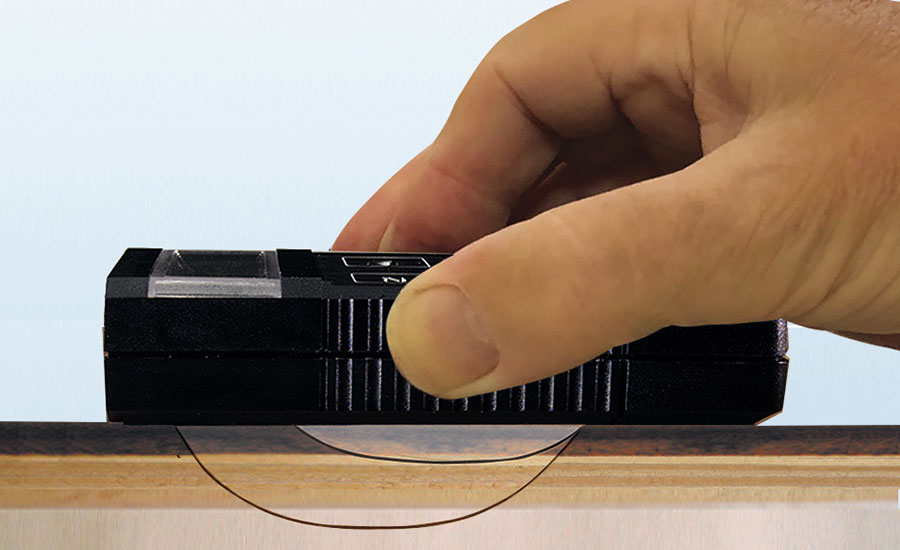
Using a dual-depth meter allows for measurements of material close to the surface. Photos courtesy of Lignomat
However, there are some limitations to pinless meters. Standard measuring depth of meters is 0.75 inches deep; a few special-purpose meters can reach deeper. But, keep in mind that all materials between the surface and the core are included in the indicated measured value and you may get false high or low values. For instance, if there are studs behind the drywall, you may see higher values in those areas. This does not necessarily mean there is more moisture behind the meter, it could just mean there is a different composition of materials behind the meter.
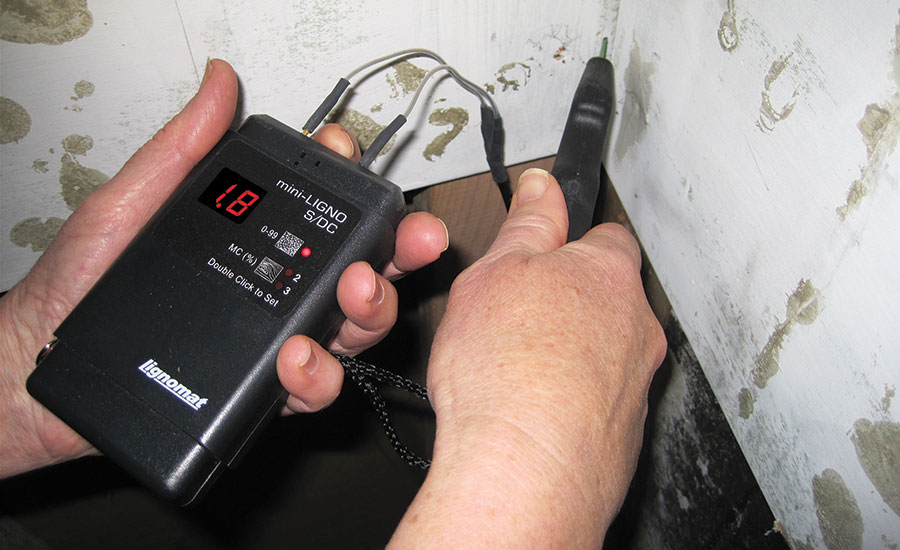
Slim electrode with Teflon-coated pins allows to measure in corners, up to 7” long pins are available for depth measurements. Photos courtesy of Lignomat
Pinless meters cannot measure any deeper than the indicated measuring depth. Also, if the measured material is thinner than the standard measuring depth, the indicated moisture values are not correct.
Using a pin meter will allow you to investigate deeper. Pin meters are available with up to 7 inch-long insulated pins and function as resistance-type meters. The conductivity between the pins is measured. The higher the moisture in the material, the higher the resistance. The meter indicates the highest moisture value within the small measuring area between the pins. Pin meters are used in the restoration industry to check for moisture problems. It can be cumbersome to hammer the pins into the material. However, as you penetrate deeper into the material, consecutive readings will show you where the moisture is coming from and how deep down into the wall the moisture infiltration reaches.
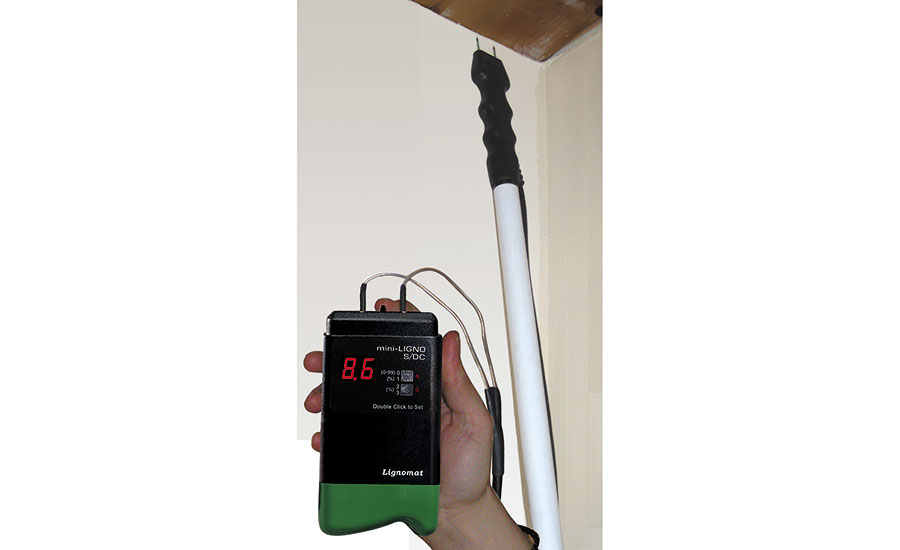
Extendable electrodes like this allow crews to reach high without a ladder. Photos courtesy of Lignomat
Measurements can be easily performed with a slim electrode. You can measure in corners, under baseboards and around pipes using an electrode from the surface up to 7 inches. Some companies, like Lignomat, have options that can actually be extended to reach the ceiling or the floor without a ladder and without crouching.
If used the correct way, pin meters can look into the depth of the material and pinpoint moisture accurately. In many cases, pin and pinless meters are used side by side. The pinless meters can scan the surface quickly for problems. The selectable measuring depth 0.25 and 0.75 inches allows comparing moisture close to surface and deeper down. Once a problem is detected or to make sure, that there is no problem, a pin meter can be used to investigate further. Once you have a pin meter, it becomes easy with remote cables to check hidden places during the drying out process and later on to make sure a leak is repaired.
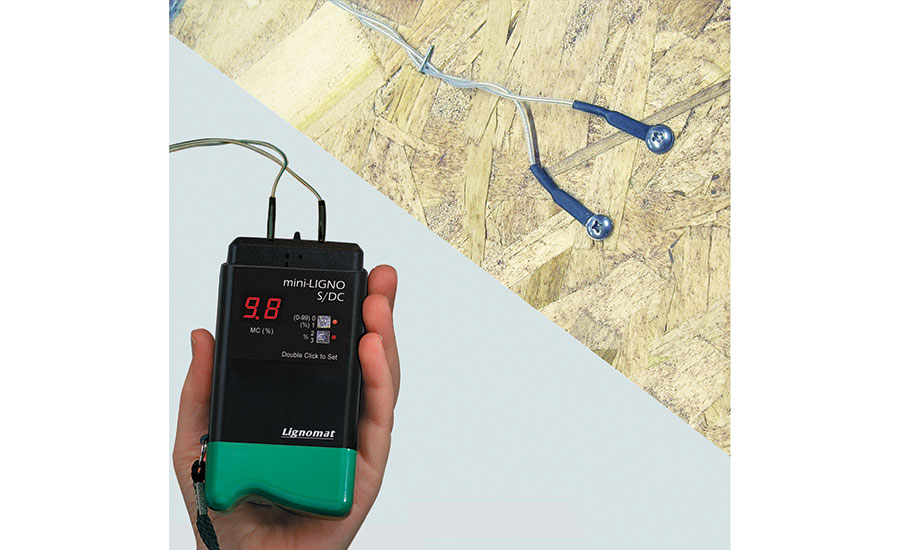
Monitor remote areas up to 35 ft away. Photos courtesy of Lignomat
Before closing the wall, install a pair of metal screws at the trouble spot and connect a cable to the meter. Leave the end of the cable outside for easy access. Cables can actually be over 35 feet long.
Whichever meter you decide to use, make sure you reach the moisture where it hides. To obtain accurate percentage values, the meters must have corrections for the material to be measured, otherwise moisture meters can be used at any time to compare different moisture levels.
Looking for a reprint of this article?
From high-res PDFs to custom plaques, order your copy today!



